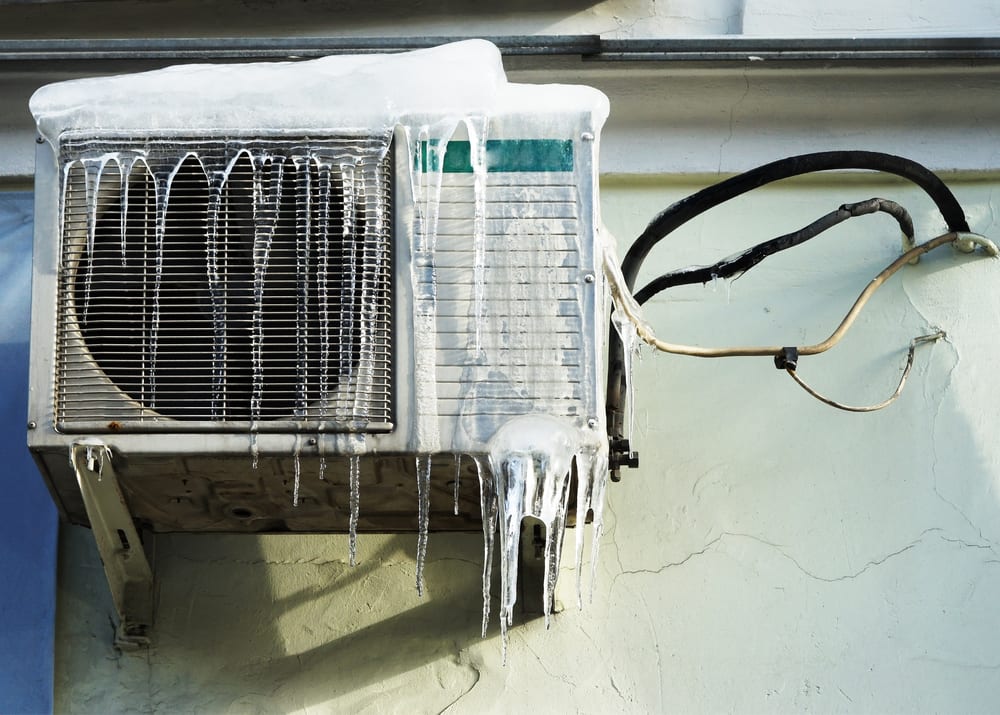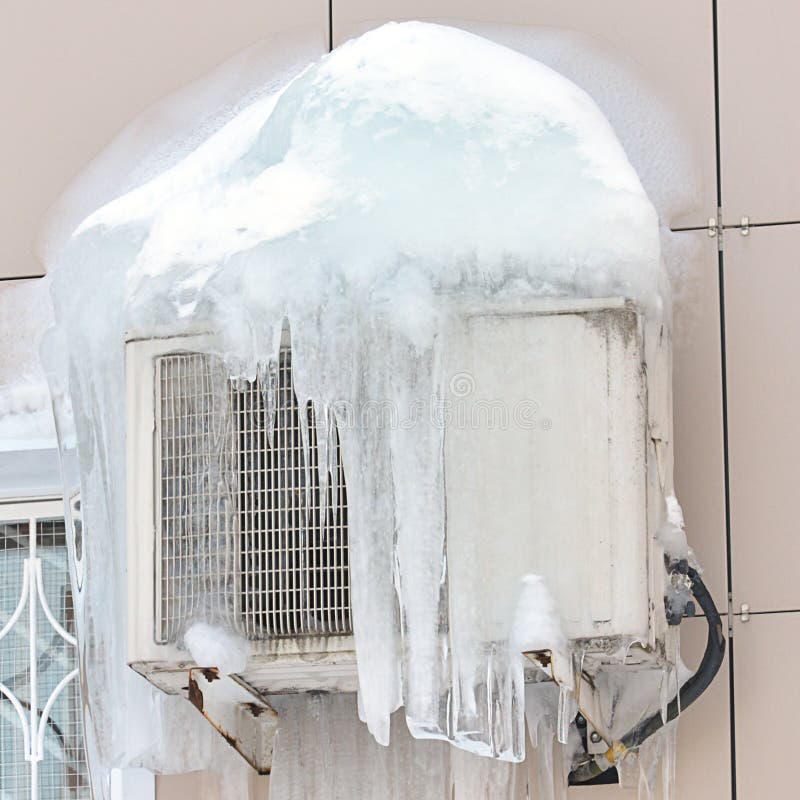How to Deal With a Frozen AC Pipe - Essential Steps for Restoration
How to Deal With a Frozen AC Pipe - Essential Steps for Restoration
Blog Article
Just how do you really feel when it comes to What Causes AC Pipes To Freeze??

Introduction
Finding that your a/c pipeline is frozen can be concerning, particularly during hot summer months when you rely on your a/c unit the most. Comprehending what to do in such a scenario is critical to stop more damages to your air conditioning system and guarantee your convenience indoors.
Understanding the Causes
Numerous aspects can contribute to the freezing of an AC pipeline. Comprehending these causes can aid you attend to the issue properly.
Absence of Airflow
One common source of a frozen air conditioner pipe is inadequate air movement. When the air flow over the evaporator coil is limited, it can cause the coil to go down below freezing temperature, causing ice development on the pipe.
Reduced Refrigerant Levels
Not enough refrigerant levels in your air conditioner system can also lead to an icy pipeline. Low refrigerant levels can trigger the stress in the system to go down, leading to the freezing of wetness on the evaporator coil.
Winter Conditions
In cooler climates, freezing temperature levels outside can add to the cold of air conditioning pipes. If your a/c system is not appropriately protected or if there are leaks in the ductwork, chilly air can infiltrate the system, causing the pipeline to ice up.
Dirty Air Filters
Filthy or stopped up air filters can restrict airflow in your AC system, bring about numerous problems, including an icy pipe. It's necessary to change or clean your air filterings system consistently to guarantee appropriate airflow and avoid ice buildup.
Indicators of a Frozen Air Conditioning Pipe
Recognizing the indications of a frozen a/c pipe is critical for prompt activity.
Reduced Airflow
If you observe a significant reduction in air movement from your vents, it could suggest an icy pipe.
Ice Buildup on the Pipe
Visible ice accumulation on the cooling agent line or the evaporator coil is a clear indication of a frozen a/c pipeline.
Weird Sounds from the Unit
Unusual sounds, such as hissing or bubbling, originating from your air conditioner device can signal that there's ice present on the pipe.
Immediate Actions to Take
When faced with a frozen air conditioning pipe, it's necessary to act rapidly to avoid additional damage to your cooling system.
Turning off the air conditioning
The initial step is to turn off your a/c unit to avoid the system from running and intensifying the issue.
Looking for Blockages
Check the area around the interior device for any type of obstructions that might be blocking airflow, such as furnishings or curtains.
Defrosting the Pipe
You can utilize mild techniques like placing towels taken in warm water around the icy pipe to aid thaw it slowly.
Safety nets
Taking preventive measures can assist avoid future incidents of a frozen a/c pipeline.
Normal Maintenance Checks
Arrange regular maintenance consult an expert HVAC professional to guarantee that your air conditioner system is running efficiently.
Changing Air Filters
Routinely change or cleanse your air filters to stop air flow limitations and maintain optimal efficiency.
Protecting Exposed Pipes
If your air conditioning pipes are revealed to chilly temperatures, take into consideration protecting them to prevent cold during cold weather.
Seeking Professional Help
If DIY approaches stop working to resolve the problem or if you're unsure regarding how to proceed, it's ideal to seek assistance from a certified HVAC specialist.
When DIY Methods Fail
If your efforts to thaw the pipe or address various other problems are not successful, it's time to contact a professional.
Value of Hiring a Professional HVAC Technician
A certified HVAC service technician has the proficiency and tools essential to diagnose and repair concerns with your air conditioning system securely and efficiently.
Verdict
Handling an icy AC pipe can be a frustrating experience, however recognizing how to respond can assist decrease damage and bring back convenience to your home. By recognizing the causes, recognizing the indications, and taking punctual activity, you can effectively address the problem and prevent future occurrences.
What to Do If Your AC Line Is Frozen
Make Sure All Supply and Return Air Vents Are Open
If you notice problems with airflow, the first thing you should do is check your supply and return vents. Supply vents distribute clean, conditioned air throughout your home. As this air becomes stale, it’s pulled into the return vent, where it’s reconditioned before being sent back out through the supply vent.
When these vents are closed, air won’t flow in the home. Before examining your AC, check the vents in every room and ensure they’re all open.
Check for a Dirty Air Filter
Another possible cause of limited airflow is a dirty air filter. Your air conditioner’s filters catch elements you don’t want to breathe in, such as dirt and dust. Over time, filters can become clogged, ultimately blocking air from flowing in and out. The lack of airflow can then cause the entire coil to freeze and will completely restrict any air from moving through it. The AC may need to be powered off for one to two days to allow the coil to thaw after replacing the filter to allow proper functioning of the unit. This debris can also accumulate on your AC’s evaporator coil, requiring a more serious repair. In general, air filters should be cleaned regularly (about every two weeks).
Assess Your Outdoor Unit
In addition to checking your AC, assessing the outdoor unit is a good idea. Also known as the condensing unit, it works with your interior unit to release heat outside. An issue with the outdoor unit can result in rising internal temperatures.
Overgrown Shrubs or Clogged Leaves
From leaves and twigs to shrubs and debris, there’s no shortage of outdoor elements that can accumulate around your condensing unit. When these elements get lodged inside the unit, they can block airflow. Fortunately, removing the blockage can solve the problem.
Sounds of a Broken Fan
Shrubs and leaves aren’t the only things that can impede your outdoor unit’s airflow. If the fan is broken, the unit won’t be able to properly get rid of heat — which means the internal temperature won’t go down. First, make sure the fan is spinning. If it is, check for the following sounds of a broken fan:
Buzzing Rattling Screeching Hissing Clicking Preventative Measures
Nobody wants to deal with a frozen AC line. In addition to causing problems with your air conditioner, they require professional repairs. On the bright side, there are preventative measures you can take to help ensure this issue doesn’t arise in the first place.
https://www.coopergreenteam.com/blog/what-to-do-if-ac-line-frozen

We hope you enjoyed our article about Have a Frozen AC Line? Here’s How to Fix It. Thanks so much for finding the time to read through our posting. For those who enjoyed our article kindly remember to share it. Thanks for your time. Kindly stop by our site back soon.
Call Today Report this page